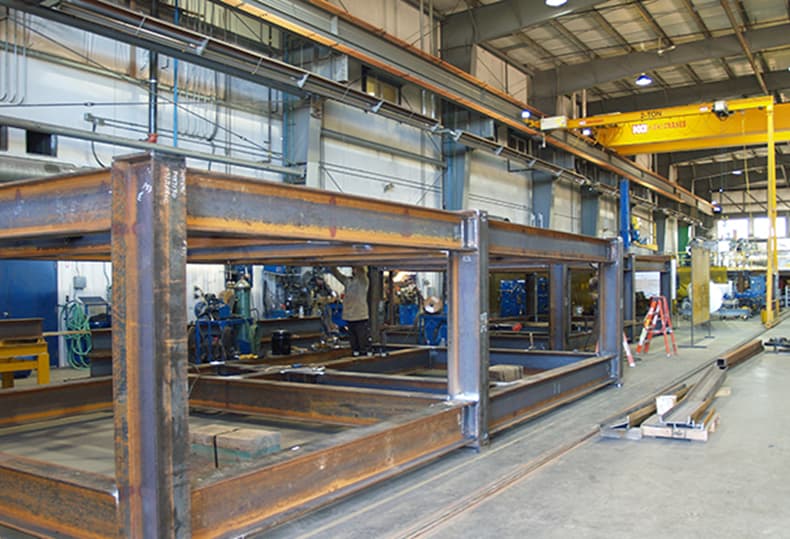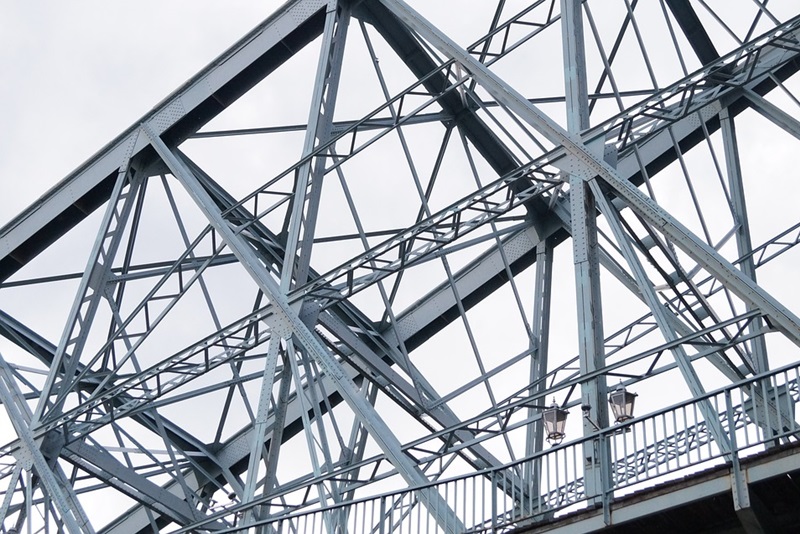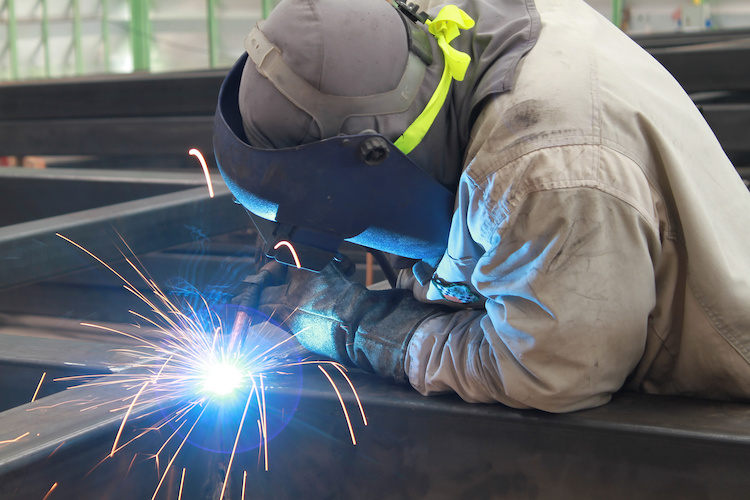Trustworthy Steel Fixing Solutions: Making Sure Architectural Stability
Trustworthy Steel Fixing Solutions: Making Sure Architectural Stability
Blog Article
Innovative Fads in Steel Construction: Enhancing Durability and Precision
In the world of steel manufacture, the pursuit of durability and precision has actually led to a wave of cutting-edge patterns that are improving the sector. From developments in welding technologies to the assimilation of robotic automation in manufacture processes, the landscape of steel manufacturing is developing quickly. High-strength alloy development, paired with the use of 3D modeling and simulation software program, is pressing the boundaries of what is achievable in regards to structural integrity and precision. The expanding focus on sustainable techniques in steel manufacturing is not only driving performance yet additionally cultivating a more ecologically mindful method to construction. These trends are not simply shaping the here and now but additionally preparing for the future of steel manufacture, promising additional enhancements in resilience and accuracy.
Advanced Welding Technologies
In the world of steel manufacture, the fostering of cutting-edge welding modern technologies has dramatically reinvented the market's method to attaining exceptional top quality and precision in architectural welds. Advanced welding technologies, such as laser beam welding and friction stir welding, have actually become game-changers in the field. Laser beam of light welding uses a focused laser beam to join metal parts with exceptional accuracy and rate, making it perfect for slim products and intricate styles. On the various other hand, friction mix welding develops extremely solid bonds by mechanically intermixing the molecules of the materials at the joint, removing the need for thawing the metal. These innovations provide many benefits, including minimized heat-affected zones, marginal distortion, and improved mechanical residential or commercial properties in the welded joints. By leveraging these sophisticated welding methods, steel producers can elevate the resilience, stamina, and precision of their architectural welds, satisfying the increasingly demanding requirements of contemporary building projects.
Robotic Automation in Manufacture
Embracing robotic automation has ended up being a foundation of modern steel construction techniques, enhancing and simplifying processes efficiency across the industry. Robotics are revolutionizing the method steel elements are manufactured, using exceptional precision and rate while reducing human mistake. These automated systems can deal with recurring tasks with constant precision, bring about better final result.
One trick benefit of robotic automation in steel fabrication is the ability to function around the clock without fatigue, considerably boosting manufacturing result. This continuous operation reduces downtime and speeds up job timelines, inevitably saving expenses for manufacturers. Furthermore, robots can be set to execute intricate jobs that may be hazardous or challenging for human workers, improving safety in the workplace.
Furthermore, robotic automation allows smooth combination with other electronic modern technologies, such as computer-aided layout (CAD) software program and Net of Things (IoT) systems (steel fabrication melbourne). This interconnected approach improves communication in between various phases of manufacture, optimizing operations and guaranteeing real-time tracking and control. As the steel manufacture industry continues to evolve, robotic automation sticks out as a transformative force driving effectiveness and accuracy in manufacturing processes

High-Strength Alloy Advancement
The advancement of high-strength alloy advancement in steel fabrication is reshaping the market's technique to enhancing product resilience and efficiency. High-strength alloys are engineered to exhibit premium mechanical residential or commercial properties, such as boosted tensile toughness, durability, and deterioration resistance compared to conventional steel grades. By incorporating these sophisticated alloys right into manufacture processes, manufacturers can create components that endure greater tension degrees and rough settings, leading to even more sturdy and reputable output.
One trick benefit of high-strength alloy advancement is the capacity to lower product thickness without jeopardizing structural stability. This not only causes lighter-weight components but also contributes to set you back financial savings and improved effectiveness in construction and setting up processes. The enhanced strength-to-weight ratio of these alloys permits for the layout and building of frameworks with higher load-bearing capacities while decreasing general weight.
3D Modeling and Simulation Software Program
Innovations in steel fabrication processes have actually been considerably pushed by the assimilation of cutting-edge 3D modeling and simulation software tools. These devices enable makers to produce in-depth online designs of their jobs, allowing them to imagine the end product with precision prior to any kind of manual labor begins. By replicating numerous stress and anxiety aspects, ecological problems, and structural tons, makers can optimize styles for improved sturdiness and performance. In addition, 3D modeling and simulation software program streamline the production procedure by recognizing possible issues early on, decreasing the need read for costly rework and minimizing material waste.

Sustainable Practices in Steel Production
Including sustainable practices into steel manufacturing processes is crucial for minimizing environmental influence and making certain lasting source availability. One crucial sustainable practice is the fostering of energy-efficient modern technologies to decrease greenhouse gas exhausts during the steel manufacturing procedure. This consists of making use of renewable energy resources, such as solar or wind power, to power steel plants and applying energy-efficient tools to maximize energy use.
An additional critical aspect of lasting steel production is the responsible sourcing of basic materials. This involves guaranteeing that the iron ore and other sources made use of in steelmaking are gotten from ethical and ecologically friendly sources. By promoting openness in the supply chain and adhering to strict environmental requirements, steel suppliers can decrease the adverse impacts of resource extraction on regional ecosystems and areas.

Conclusion
In final thought, the ingenious fads in steel fabrication such as advanced welding innovations, robot automation, high-strength alloy development, 3D modeling and simulation software, and lasting techniques are improving the longevity and accuracy of steel products. These advancements are changing the steel fabrication sector by boosting sustainability, performance, and top quality. It is clear that the future of steel manufacture depends on embracing these sophisticated technologies to fulfill the demands of modern construction and production sectors.
In the view website realm of steel manufacture, the quest of resilience and precision has actually led to a wave of ingenious fads that are reshaping the industry.In the world of steel fabrication, the adoption of innovative welding innovations has substantially transformed the sector's approach to attaining exceptional high quality and accuracy in architectural welds. As the steel manufacture industry proceeds to progress, robot automation stands out as a transformative force driving effectiveness and precision in manufacturing processes.
Furthermore, reusing and reusing steel scrap and waste products play a substantial function in enhancing the sustainability of steel manufacturing. steel fabrication melbourne.In conclusion, the innovative fads in steel construction such as sophisticated welding innovations, robotic automation, high-strength alloy development, 3D modeling and simulation software, and sustainable techniques are enhancing the resilience and accuracy of steel items
Report this page